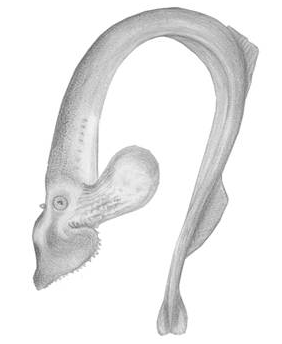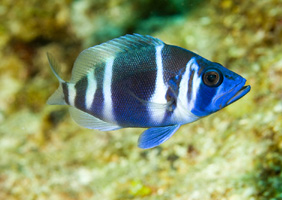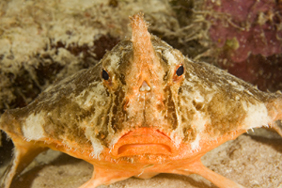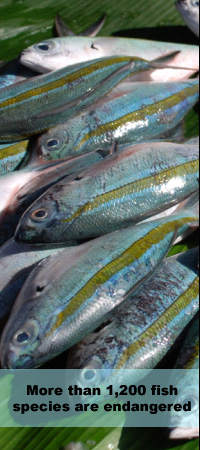|
Lampreys (Clade Hyperoartia and formerly Class Cephalaspidomorphi)
Lampreys are eel-shaped jawless “fishes” (disputed if fish) that are found in freshwater lakes and streams as well as in salt water. They are restricted to relatively cold waters.
Many lampreys are parasitic and feed on other fish by attaching to them with a suctorial mouth, rasping a hole in the body wall and sucking out the contents. However, lampreys can also feed on small invertebrates. They also use their sucker to attach themselves to fish in order to travel upstreams in rivers. They use it to attach to stones to rest or to attach themselves to more powerful fishes to get a free ride.
The skin of lampreys is entirely naked and slimy, and their seven gill openings extend behind the eyes. Whether marine or fresh water, lampreys always spawn and lay eggs in streams and rivers. During most of their life, which is about seven years, they are larval; then they undergo a metamorphose and become an adult.
Anadromous lampreys return to the sea when they have undergone metamorphosis. While living in the marine habitat for one or two years, they become mature and then return to rivers, where the reproduce and die.
Although lampreys are sometimes regarded as a delicacy and fished in Europe, the main cause of their disappearance is water pollution, to which particular larvae are particularly sensitive.
No jaws
Functional eyes
Dorsal fin
Produce many small eggs
Females die after reproduction
Single medium nostril opening between the eyes
Seven pairs of external lateral gill openings
Body is naked and eel-like
No paired fins
For more information on lampreys click here
Cartilaginous-skeleton fishes
(Clade Gnathostomata, Class Chondrichthyes)
Cartilaginous-skeleton fishes do not have any true bone. Instead, their skeleton is made of cartilage. They have strong jaws and their mouth is on the underside of the body, and their eyes are on top. They cannot see food as it enters their mouth. That is why some sharks solve this problem by touching their food briefly with their nose first. Some also use a powerful electrosensory system.
While most bony fish breed by shedding egg and milt freely into the water, all cartilaginous fish reproduce through internal fertilization. In some species the eggs hatch while still in the abdomen of the female, other species lay very big hard-shelled eggs from which fully developed juveniles hatch. This kind of reproduction ensures a high survival rate of the young but also limits the number of offspring per female.
Many species of cartilaginous fish are long-lived (certain marine species more than 100 years) and are slow to reach sexual maturity. Cartilaginous fish are therefore more sensitive to a high fishing pressure than many bony fish.
Continue on page 3
|
|

A pouched lamprey (Geotria australis)
© Endangered Species International

The indigo hamlet (Hypoplectrus unicolor) is a reef-associated and marine fish and popular as an aquarium fish. © 2006 Paddy Ryan

Shortnose batfish (Ogcocephalus nasutus) is also caught for aquariums. © 2006 Paddy Ryan
|









